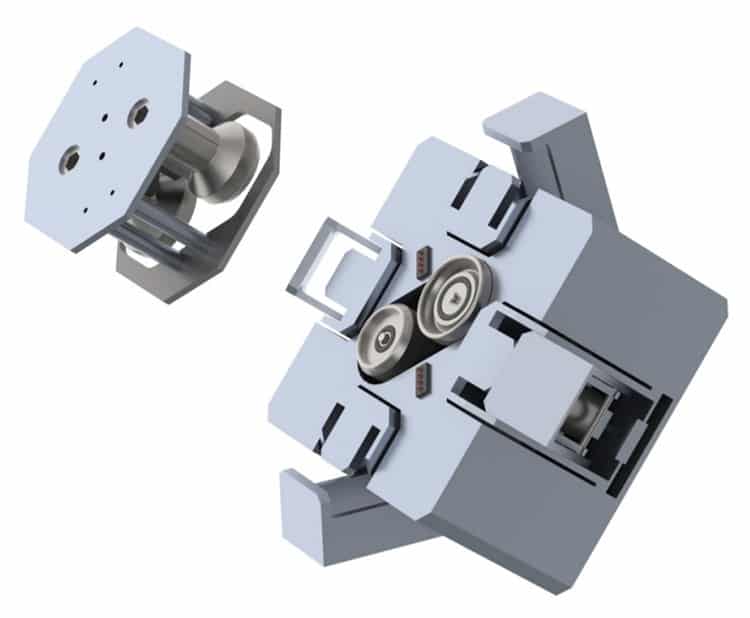6 Technologies for Space Debris Removal
Table of contents

The human spirit for exploration has taken us to the top of Mt. Everest and beyond to the very threshold of the solar system. The price for such adventures has been paid in human lives and garbage – lots of garbage. We read recently that mountaineers hauled down some 24,000 pounds of waste from the world’s tallest mountain earlier this month, including empty oxygen cylinders, plastic bottles, cans, batteries, and several well-preserved human bodies. The situation way above Everest isn’t much better, as we recently noted in our article on tracking space junk from a tiny little island in the middle-of-nowhere Pacific Ocean using a Lockheed Martin (LMT) radar powered by some gallium nitride. Now we want to talk about what technologies are being developed for space debris removal.

The motivation for cleaning up outer space is pretty obvious: There’s a lot of expensive equipment circling the Earth, beginning with the $160 billion International Space Station (ISS). Last year, a bit of space junk pierced the station, which astronauts literally patched with a piece of duct tape. The chances of more such collisions with orbital debris will only increase, as companies like SpaceX and OneWeb start pumping thousands of new satellites into space for global internet connectivity. Venture capital firm SpaceFund counts about 140 launch companies on top of that. Space junk could put a serious dent into the NewSpace economy before it ever really takes off. The issue made our list of the top NewSpace predictions for 2019.
Medieval Technology for Space Debris Removal
It turns out that a lot of smart people have devoted a lot of time to thinking about the problem of space debris removal. Our favorite option so far? Shooting a harpoon through the near-vacuum of space at about 45 miles per hour. It’s one of a number of technologies that are being tested by the Surrey Space Centre out of the University of Surrey in the UK. The agency is leading the nearly $19 million RemoveDEBRIS project that includes Airbus (AIR), which is behind the harpoon idea. While it looks like you could literally spear a whale with this thing, it’s actually the size of a writing pen.
The project has also tested other space debris removal technologies, including a net for capturing errant cubesats, modular satellites that have become increasingly popular for cheap access to space-based missions. Another technology under consideration is a dragsail that will help deorbit the RemoveDEBRIS spacecraft itself after it completes its mission. It’s like a bunch of engineers watched The Ice Pirates movie one too many times.
Can a bunch of scrappy scallywags startups do any better?
Tugboats for Space Debris Removal
Probably the most well-funded of the bunch is a company based in Singapore, but with its main operations in Tokyo and a satellite office coming to Denver, Colorado – Astroscale, which we first came across a couple of years ago. Founded in 2013, the NewSpace startup has since raised $132 million, completing an extended Series D in March for $80 million. The company is betting that the maturing space-based economy will eventually require the services of a dedicated space debris removal service, and Astroscale is jockeying to be the leader in a yet-to-be-created market. The hope is that the international community will implement regulations requiring the removal of both space junk and defunct or malfunctioning satellites.

Its main space debris technology in development involves a mission it calls End-of-Life Service by Astroscale demonstration (ELSA-d), which is scheduled for launch in 2020. The idea is that a chaser satellite will dock magnetically with a second target that it will tow into Earth’s atmosphere to burn up. The proposal would require all satellites in mid- to high-low earth orbit be pre-engineered with a lightweight docking plate that can interface with the Astroscale tugboat. The company says it will also address what’s called active debris – junk already floating in space – but few details have emerged aside from “innovative solutions for capture and removal of environmentally critical debris, such as rocket upper stages and defunct satellites that are already in orbit.” In other words, they’re still working on it.
Update 11/29/2021: Astroscale has raised $109 million in Series F funding to scale and dramatically accelerate their on-orbit servicing capabilities. This brings the company’s total funding to $313.2 million to date.
Dedicated Engine for Space Debris Removal


While it develops the D3 and other hardware, the company is brokering launch service deals with other NewSpace startups, including a Swiss startup called Astrocast that has raised about $4.2 million, including from Airbus, to deploy a constellation of 80 cubesats for the Internet of Things, which could challenge bigger, more expensive IOT satellite networks like that operated by ORBCOMM. At the same time, D-Orbit is buying launch space from another NewSpace startup that is also interested in solving the problem of space debris removal – Firefly Aerospace.
Scavenging Space Debris for Resources


Apparently, Markusic has the bandwidth to think beyond his first launch, as he’s reportedly been making the conference circuit with speeches about his own ideas on space debris removal. His proposal involves using “solar electric propulsion-powered space tugs to capture spent satellites and transport them to Mars’ over-sized asteroid moon, Phobos, transforming it into a staging base for a future human presence on Mars,” Inc. reported. In other words, Firefly wants to turn Mars into the new China, where we can send children in little spacesuits to scavenge satellites for valuable electronic bits.
Update 03/24/2022: Firefly Aerospace has raised $75 million in Series B funding to fund more Alpha rocket launches, further develop its larger rocket Beta, finance its Blue Ghost lunar lander, and continue work on a space utility vehicle – also known as a “space tug” — to transport satellites into unique orbits after a launch. This brings the company’s total funding to more than $271.6 million to date.
Getting a Grip on Space Debris

Venus Fly Trap for Space Debris

future piece of space debris platform from where it can deploy multiple satellites predators.
Gas Stations in Space
Finally, we bring you gas stations in space. Or, more accurately, a Silicon Valley startup called Orbit Fab has raised an undisclosed amount of pre-Seed money to flesh out the idea of building a satellite refueling station in space. That means satellites wouldn’t necessarily be as disposable as oxygen canisters on Everest. The company has already developed the hardware of pumps, valves, and plumbing for such a fueling system and recently tested it by transferring water to the ISS in microgravity.

Orbit Fab plans on offering a variety of storable propellants on orbit that include water, and more dangerous-sounding propellants such as xenon, green monopropellants, hydrazine, NTO, and hydrogen peroxide.
Update 09/07/2021: Orbit Fab has raised roughly $10 million in funding to further its goal to be the go-to source for orbital refueling. This brings the company’s total funding to $16.3 million to date.
Conclusion
Space debris removal is a solution in need of a market. While the long-term health of the NewSpace economy likely hinges on clearing the space junk traffic jam, the situation will probably have to get much worse – i.e., the destruction of some really expensive stuff – before the industry decides to pay for these services. However, expect the sector to expand, especially as competition heats up in the launch sector. Experts and industry insiders alike are predicting a serious reckoning soon among the dozens of startups trying to build launch capabilities for what is still a pretty finite demand despite rapid growth in the smallsat market, so “garbage collector in space” might sound like an attractive pivot soon.
Sign up to our newsletter to get more of our great research delivered straight to your inbox!
Nanalyze Weekly includes useful insights written by our team of underpaid MBAs, research on new disruptive technology stocks flying under the radar, and summaries of our recent research. Always 100% free.














